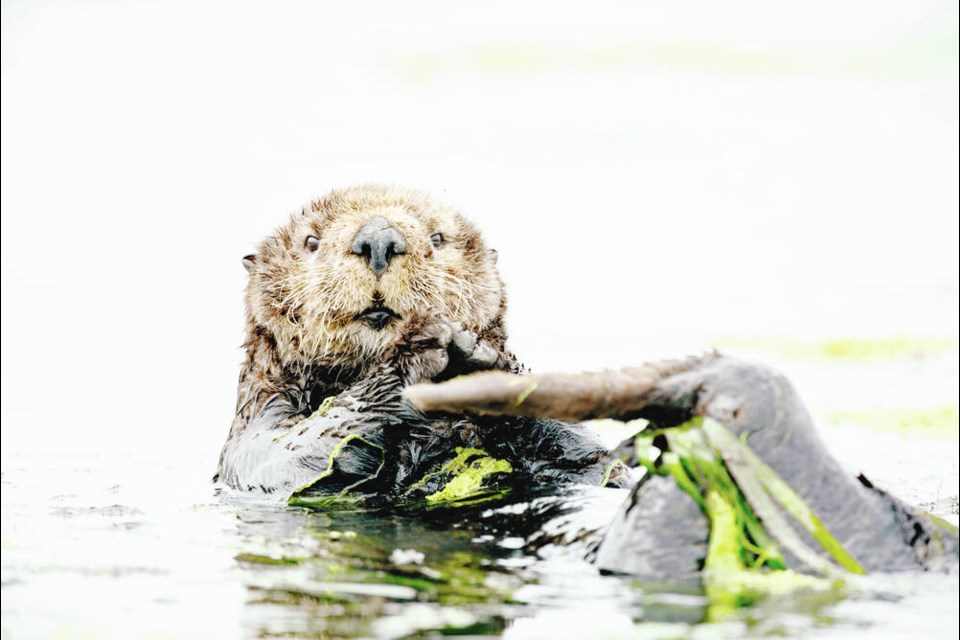Sea otters are playing a significant role in the health of eelgrass, a key habitat for herring and young salmon and rockfish, according to a new study by the University of Victoria.
When otters dig around in eelgrass looking for shellfish and disturb the coastline grasses, they create a genetic diversity in the plants that makes them more sustainable amid changing climate conditions.
In a paper published recently in the journal Science, University of Victoria geography PhD graduate Erin Foster said sea-otter digging disturbs the eelgrass roots, creating conditions that favour sexual — as opposed to asexual — reproduction.
“With asexual reproduction, new plants are genetically identical to the parent, but with sexual reproduction, almost every single seed will be genetically different, since the genes of the two parent plants mix,” said Foster.
The paper notes that in areas where sea otters have been present between 20 and 30 years, eelgrass genetic diversity was up to 30 per cent greater than in areas without sea otters, or in areas where otters had arrived fairly recently, during the past 10 years.
The research was supported by the Tula Foundation, Natural Sciences and Engineering Research Council of Canada-Vainer and a Discovery Grant under supervisor Chris Darimont.
The researchers studied eelgrass meadows off Vancouver Island and the Rivers Inlet area southeast of Bella Bella on the mainland coast, and acknowledged the territories of the Ka:’yu:’k’t’h’/Che:k:tles7et’h’, Huu-ay-aht, Haíɫzaqv, and Wuikinuxv First Nations.
The genetic diversity of eelgrass is essential to its survival in a rapidly changing environment, said Foster.
She said variety in genetic compositions of each plant allows them to cope with environmental stressors. Some eelgrasses, for example, might be very tolerant of heat waves or disease, and some may tolerate heavy grazing or ocean acidification.
Foster said eelgrass prevents shorelines from erosion and provides a habitat for herring and young rockfish and salmon. Eelgrass also produces oxygen and stores greenhouse gases, helping to mitigate the effects of climate change.
She said eelgrass is also culturally important to Indigenous people as a source of starch, as the roots can be eaten whole and seeds ground into a flour.
Foster credits mentor and co-author Jane Watson, who first had the idea about sea otters enhancing genetic diversity of eelgrass decades ago. “Watson thought there must be some mechanism allowing eelgrass beds to thrive despite the digging efforts of the sea otter,” she said, adding the two worked together to come up with a study design to evaluate the idea that digging favoured sexual reproduction in eelgrass, leading to greater genetic diversity.
The South Coast Conservation Program, which is dedicated to the protection of species and ecosystems at risk, said eelgrass meadows function like bio-diverse aquatic pastures, nurseries and refuges for a range of species, and foraging grounds for migratory waterbirds.
It estimates that 80 per cent of commercial fish and shellfish species depend on eelgrass habitat at some point in their lifecycles.



